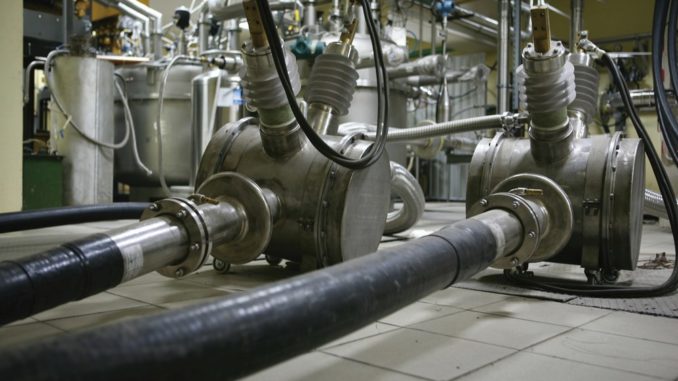
Authors: V.E. Sytnikov, Т.V. Ryabin, R&D Center at FGC UES, JSC (Russia), S. Yamaguchi, Yu. Ivanov, Chubu University (Japan)
Keywords: Superconducting cable line; power bridge; transmitted power; cryogenic station; critical current; gigawatt.
Abstract: The location of powerful electric power sources (nuclear power plants, hydroelectric power stations, wind farms) at great distances from large cities and electric power consumers, leads to the need to transport large energy flows over considerable distances. At the same time, the traditional scheme of power distribution assumes the use of high-voltage cable or overhead transmission lines (220-750 kV), which is stipulated by the desire to minimize energy losses during its transportation. This necessitates the creation of high-voltage step up and step down substations and leads to significant energy losses during its transportation and to alienation of large areas of land. The use of superconducting cable lines will significantly improve the efficiency, reliability and environmental friendliness of long-distance transmissions. With the current level of superconducting and cryogenic technology development, it is possible to create long superconducting cable lines for transportation of energy over distances of tens and hundreds of kilometers. The power of a single DC line can reach several gigawatts at a voltage of 100-200 kV, and the energy losses in it will be significantly lower than in traditional cable or overhead power lines. In our assessment of long cable lines, we will consider DC transmission lines, since any AC cable lines have a length limitation due to the charging currents which lead to a decrease in power at the far end of the line. This paper will briefly present the results of two largest projects in the world for construction of superconducting DC lines cooled by liquid nitrogen. This is the project to create a 1.0 km line in Hokkaido (Japan) and the project to build a 2.5 km line for the electrical network of St. Petersburg (Russia). Both projects are designed for a transmitted power of 50 MW at a voltage of 20 kV. Based on the experimental and theoretical results obtained by research groups in implementation of these two projects, the possibility of building energy bridges using superconducting technologies was shown for above-ground and underwater options. Estimates of transmission power, total length of the line and maximum distance between the cryogenic stations, energy losses and the required power of a cryogenic plant will also be presented. It will be shown that, it is possible to create superconducting transmission lines with a power of about 10 GW in almost any length. At the same time, cryogenic stations should be located along the line with a maximum step of 20 to 60 km. The possibility of increasing the distance between cryogenic stations by improving the thermal insulation of cryostats will be discussed.



